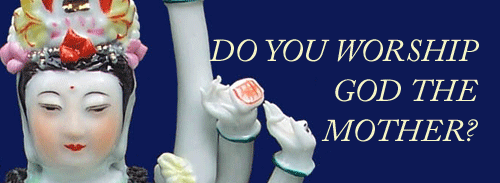Sanskrit Scripture
Ancient Hindu Scripture as the Lore of Our Mother God
Sanskrit Scripture is the oldest still-living scripture on earth. While it is often seen as ancient Hindu Scripture, it goes back to an era long before anything called "Hinduism".
The first Upanishads, in particular, date back to the period of the Great Re-adaptation of many of the World Traditions (discussed on our page on Pagan Religion). Thus, while not being ancient "Hindu" scripture, they constitute adaptations of a stream that goes back to the Primordial Feminine Tradition to the needs of the later Kali Yuga.
Clearly these translations are made in a patriarchal context: but equally clearly they are translations of the Primordial Feminine Tradition that would have to have been made at this stage in the Yuga.
In this case, where there are only minimal and inessential references to masculine persons or concepts, we feel that a minimal translation into feminine forms and the terminology of Déanic/Filianic religion is entirely acceptable.
In this form, these writings represent the adaptations that would have been made if the Feminine Tradition had continued down the Kali Yuga, uninterrupted by the Patriarchal Revolution.
In making translations of Sanskrit Scripture, we shall bear in mind the Orthodox Commentaries as well as the fundamental doctrines of all tradition as laid out in The Feminine Universe.
Current translations will be provisional (not Authorised Versions). There is certainly a difficulty in translating what are in some respects highly technical metaphysical texts into the language of a later and lower era (and, in particular, into the English language, which in some respects is the most "consolidated", or "materialised", language of the Age - which, in part, accounts for its "universality" in the very late Kali Yuga). However, we feel that translations within the Feminine Tradition, linking these texts back to their Primordial Roots rather than regarding them simply as ancient Hindu Scripture, will, to say the least of it, bring us easily as close to the true meaning as any other translation.
It must, in its very nature, come closer than the so-called "scholarly" translations that are ignorant of the true inner nature of what they are dealing with, as well as all translations influenced by New-Age, Theosophical and other Western-modernist ideas.
We hope to produce English translations of Sanskrit Scripture that are as near as possible to being definitive in expressing the true metaphysical meaning in all its depth and range, as well as being suitable for the devotional, meditative and ritual use of all devotees of our Mother God.
The translation of the Upanishads into English is near-impossible, since the translation is from Sanskrit - a language replete both with metaphysical terminology and which retains the much of the metaphysical "root-implications" of more "ordinary" words. English on the other hand, has been refined over centuries into one of the most "practical" and "down-to-earth" languages even among the Western tongues; and while it has a fine vocabulary for physical and even emotional beauty, it is less well equipped to deal with metaphysics (especially poetic and non-technical metaphysics) than almost any other. However, what we say of English is scarcely less applicable to any Western language.
Translators are necessarily driven to the use of technical terms, special ad-hoc coinages, untranslated Sanskrit words or awkward circumlocutions.
As Filianic Déanists, we have access to a terminology that can far more accurately render the concepts of Sanskrit Scripture. Words like thamë, werde, raya etc, which have no equivalent in English, but are very close to the equivalent Sanskrit terms; concepts like that of the True Self, which is fundamental to Filianic thealogy, are in everyday use among Aristasians and other Déanists. They allow Sanskrit Scripture to be rendered in terms that are familiar and neither awkward nor inaccurate, so that they may be read as they were intended to be read.
The Sanskrit Scriptures may still be "difficult" (many of them treat of a High Mysticism which is by its nature hard for the worldly soul to grasp) but the artificial barrier of language may at least be largely eliminated.
This is not an answer to the general "problem of translation", since Déanic vocabulary is as obscure to the average English person as the original Sanskrit.
But these translations are made specifically for devotees of Our Mother God. Their sole intention is to be valuable to such devotees. And, since we are exiled in a world where we have no living tradition, perhaps there is a special Providence in the fact that they can be valuable to us as they can to few other Western people.
May Dea be forever praised.
AUM
Shantih, shantih, shantih.
___________________________________
See also:
Isa Upanishad: Our first feminine translation of a beautiful and profound Sanskrit Scripture
Living Scriptures of Our Mother God
Send us your questions or comments
Chapel of Our Mother God Homepage
All written material at the Chapel of Our Mother God is copyright. Should you wish to reproduce any portion please contact us for permission.
YouTube or Facebook
This section:
Fundamental Beliefs
A complete guide to the faith of God the Mother
FILIANIC SCRIPTURES
Gospel of Our Mother God
The Gospel of Our Mother God is a collection of inspirational texts, prayers and daily inspiration for the Mother-Faith devotee or household.
The Feminine Universe
The Other Philosophy
Everything you have ever heard comes out of the patriarchal world-view. Its materialism, its religion, even its feminism. Here is the other way of seeing the world; the natural way: the way that everyone saw things before patriarchy and will again when patriarchy is long forgotten.


